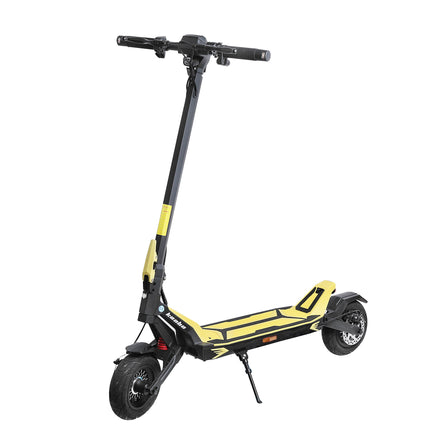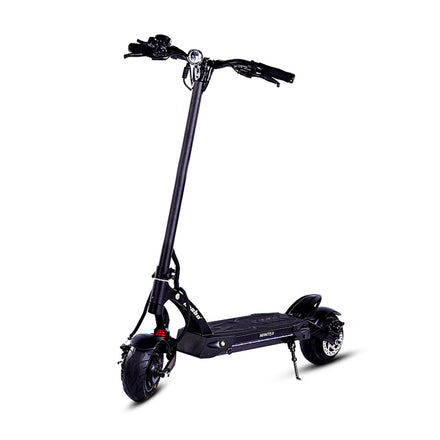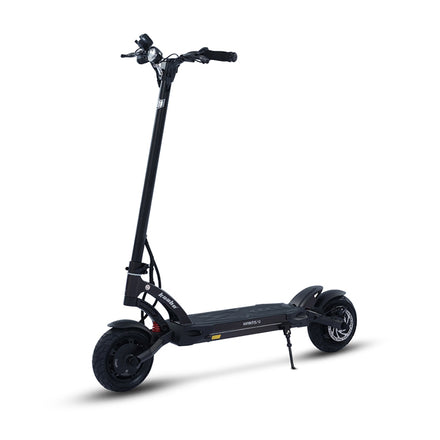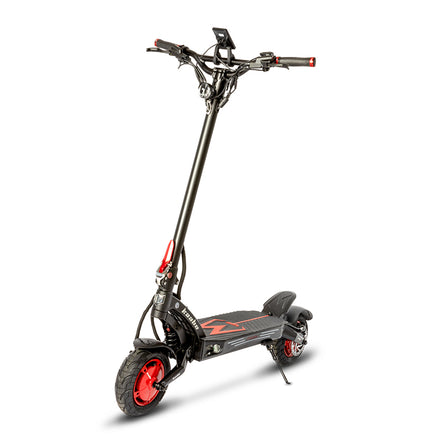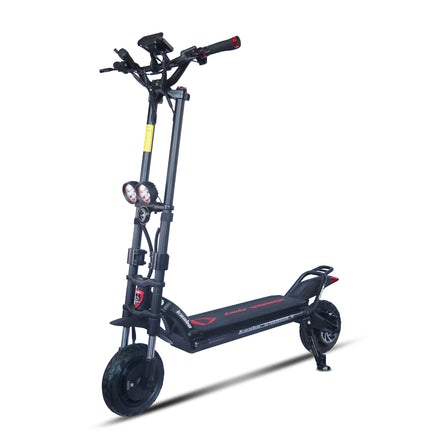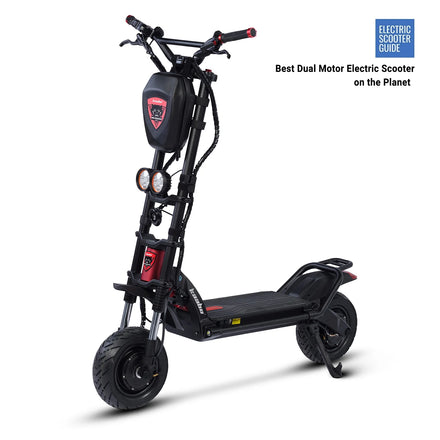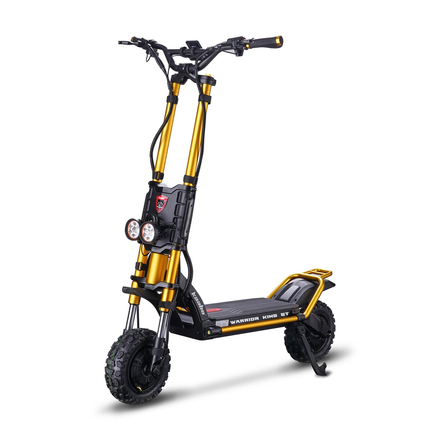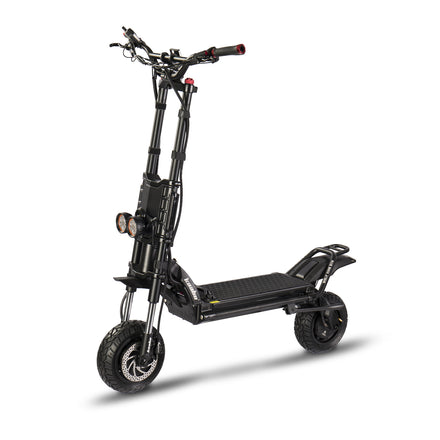Electric Scooters: A Must-Have for This Semester’s Commute
Why Electric Scooters Are Taking Over College Campuses
If you’ve walked across a college campus lately, you’ve probably noticed something: electric scooters are everywhere. They’re zipping past the bike racks, leaning against dorm walls, and filling charging ports in student lounges. And it’s not hard to see why — electric scooters for college students have become more than just a cool accessory; they’re now a legit transportation solution.
With the cost of parking permits rising, bus schedules rarely aligning with class times, and campuses spreading over sprawling miles, the need for a fast, flexible, and affordable mode of transport is crystal clear.
According to a 2023 National Association of City Transportation Officials report, personal electric scooter use in the U.S. grew by 15% year-over-year, with the biggest jump among 18–24-year-olds — prime college demographic territory.
The Big Benefits: Why Students Love Electric Scooters
1. Cost Savings That Add Up
Let’s face it — college life isn’t exactly overflowing with disposable income. Cars come with insurance, fuel, parking permits, and constant maintenance costs. In contrast, electric scooters are a one-time purchase (plus a small electricity cost for charging).
A typical e-scooter costs less than $1 per full charge, even for high-capacity models like the Kaabo Mantis King GT. Over the course of a semester, the savings can easily reach hundreds of dollars compared to driving.
2. Campus-Friendly Convenience
Electric scooters glide past parking struggles. Most fold down in seconds and can be tucked under a desk or stored in a dorm closet. When your next class is on the other side of campus, you can cut travel time in half without breaking a sweat.
3. Eco-Friendly Transportation
Students today are more environmentally conscious than ever. Electric scooters for college students produce zero emissions during use, making them a sustainable alternative to cars and even gas-powered mopeds.
According to the U.S. Department of Energy, replacing a daily 2-mile car trip with an e-scooter reduces over 700 pounds of CO₂ annually — small rides, big impact.
4. Time-Saving Efficiency
Between lectures, group projects, internships, and part-time jobs, students are constantly racing the clock. Electric scooters make short trips feel almost instantaneous.
A ride that takes 15 minutes on foot can be cut to just 4–5 minutes with a capable e-scooter.
What to Look for in an Electric Scooter for College
Choosing the right e-scooter isn’t about picking the fastest one on the shelf — it’s about finding the model that matches your daily needs. Here’s a breakdown of the features that matter most to students:
Range
For campus commuting, 15–20 miles of range per charge is typically enough. However, if you plan to ride off-campus regularly, look for models offering 35+ miles like the Kaabo Mantis King GT.
Speed
Campus speed limits often hover between 10–15 mph, but having extra speed for off-campus rides is a perk. Some scooters hit 40+ mph, but those speeds should be reserved for safe, open areas.
Portability
A folding mechanism is non-negotiable for students who need to carry their scooter into classrooms or dorm rooms. The lighter the scooter, the better — but don’t sacrifice battery size for weight unless portability is your top priority.
Safety Features
Hydraulic brakes, front and rear lights, and a sturdy deck make a big difference in preventing accidents, especially during night rides.
Build Quality
College life can be tough on gear. Scooters built with aircraft-grade aluminum or similar durable materials last longer and handle more wear and tear.
Spotlight Model: The Kaabo Mantis King GT
Now, let’s talk about a scooter that checks all the boxes and then some: the Kaabo Mantis King GT. This isn’t your average campus ride — it’s a versatile powerhouse that blends city commuting with off-road capabilities.
Power & Performance
Dual 1100W motors push the Mantis King GT to a thrilling 43 mph top speed. It’s not just about speed, though — the acceleration (0 to 31 mph in 6 seconds) is perfect for quick starts at crosswalks or climbing hilly terrain.
Battery Life & Range
The 60V24Ah battery delivers a reliable 37-mile range in real-world conditions, stretching up to 56 miles if you ride conservatively. That’s more than enough for a week of typical campus commutes without charging.
Ride Comfort
Thanks to dual adjustable hydraulic suspension and all-terrain tires, bumps, curbs, and uneven campus pathways are a non-issue.
Safety
With advanced hydraulic brakes, a waterproof TFT display, and powerful lights, this scooter is as safe as it is fast.
Durability
Built from aerospace-grade aluminum with steel reinforcement, the Mantis King GT is designed to last beyond your college years.
Cost Comparison: Car vs. Electric Scooter for Students
| Expense Item | Car (Per Semester) | Electric Scooter (Per Semester) |
|---|---|---|
| Fuel | $300–$500 | $10–$15 |
| Parking Permit | $100–$300 | $0 |
| Insurance | $400–$800 | $0 |
| Maintenance | $100–$200 | $20–$50 |
| Total | $900–$1,800 | $30–$65 |
Sources: AAA, College Transportation Offices, U.S. Energy Department
Tips for Using an Electric Scooter on Campus
-
Know the rules — Some campuses have designated scooter lanes or speed limits.
-
Charge smart — Keep your charger handy and avoid running the battery to zero regularly.
-
Lock it up — Use a strong lock when leaving your scooter outside, especially overnight.
-
Ride defensively — Watch out for pedestrians, cyclists, and vehicles.
Popular Alternatives to the Kaabo Mantis King GT for Students
While the Mantis King GT is an incredible option, it may be more power than some students need. Alternatives include:
-
Segway Ninebot MAX – Budget-friendly, great range, and lighter weight.
-
Xiaomi Mi Electric Scooter Pro 2 – Compact, portable, and affordable.
-
Apollo City 2022 – Strong commuter option with good suspension.
FAQs
Q1: Are electric scooters allowed on all campuses?
Not always. Some universities have strict rules about where scooters can be ridden or parked. Always check your school’s transportation policy.
Q2: How long does an electric scooter battery last?
Most last 2–4 years, depending on usage and maintenance. High-quality models with larger batteries tend to last longer.
Q3: Do I need a license to ride an electric scooter?
In most U.S. states, no license is required for scooters under a certain speed, but laws vary by location.
Q4: Can electric scooters handle rain?
Many, including the Mantis King GT, are water-resistant, but prolonged exposure to heavy rain can still damage components.
The Smarter Way to Commute This Semester
Electric scooters for college students aren’t just a trendy upgrade — they’re a cost-effective, time-saving, and eco-friendly solution to the age-old “how do I get to class on time?” problem.
Whether you go for a budget commuter model or invest in a high-performance machine like the Kaabo Mantis King GT, you’ll be joining a growing movement that’s reshaping campus life.
Next time you’re running late for class, imagine gliding past the gridlock, wind in your hair, battery at 90%, and zero parking fees in sight. Sounds pretty good, right?
Lastest Blog Post






Related Product
Newletter
Promotions, new products and sales. Directly to your inbox.


